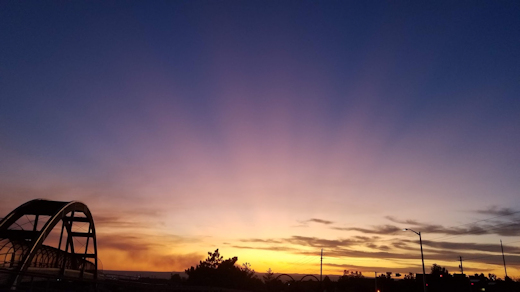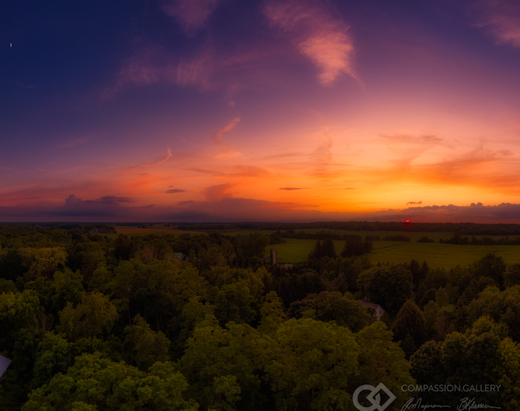WHY ARE SUNSETS TURNING PURPLE? Every year, on average, about 60 volcanoes erupt somewhere on Earth, shooting ashy plumes of sulfurous gas thousands of feet into the air. Rarely do those plumes make it all the way up to the stratosphere. This summer, however, two volcanoes have done it. The Raikoke volcano in the Kirul Islands (June 22nd) and the Ulawun volcano in New Guinea (Aug. 3rd) both punched through to the stratosphere, sending material as high as 60,000 ft.
The action of these two volcanoes may explain why many sky watchers are starting to notice purple sunsets. Juli Fowler of Albuquerque, New Mexico, photographed this example on Aug. 24th:
“Spectacular sunsets are a regular thing here in the Land of Enchantment, but imagine my surprise when I saw these violet beams caused by volcanic aerosols in the stratosphere,” says Fowler. “Wow!”
Why purple? Fine volcanic aerosols in the stratosphere scatter blue light which, when mixed with ordinary sunset red, produces a violet hue. The purple color is often preceded by a yellow arch hugging the horizon. As the sun sets, violet beams emerge from the yellow, overlapping to fill the western sky with a soft purple glow. High-quality pictures of the phenomenon often show horizontal bands cross-crossing the yellow arch. These bands are the volcanic gas.
Ray Majoran of London, Ontario, Canada, captured this dramatic image using a drone:
“Sunsets lately have a beautiful purple/pink glow to them, so I have been launching my Mavic 2 Pro drone to photograph them,” says Majoran. “This picture was taken just a few days after the Ulawun volcano eruption in New Guinea.”
Sky watchers shouldn’t expect to see purple every night. The volcanic gas appears to be patchily distributed, bringing strange sunsets on some nights, not all. Clear air, lack of clouds, and country settings improves their visibility


